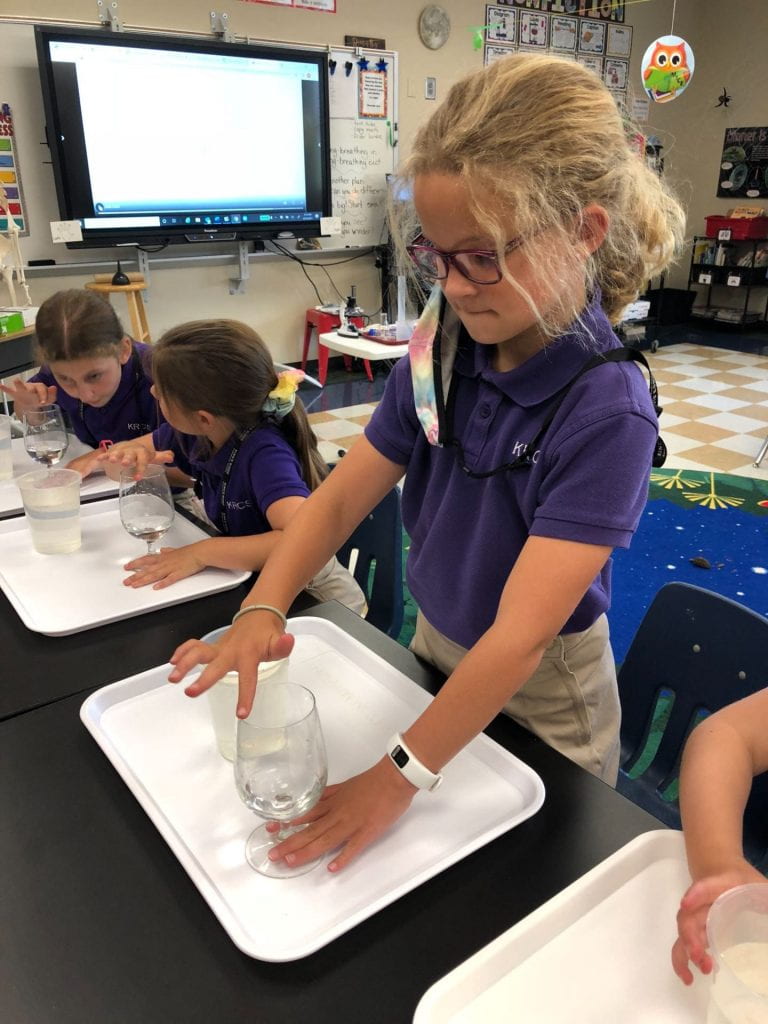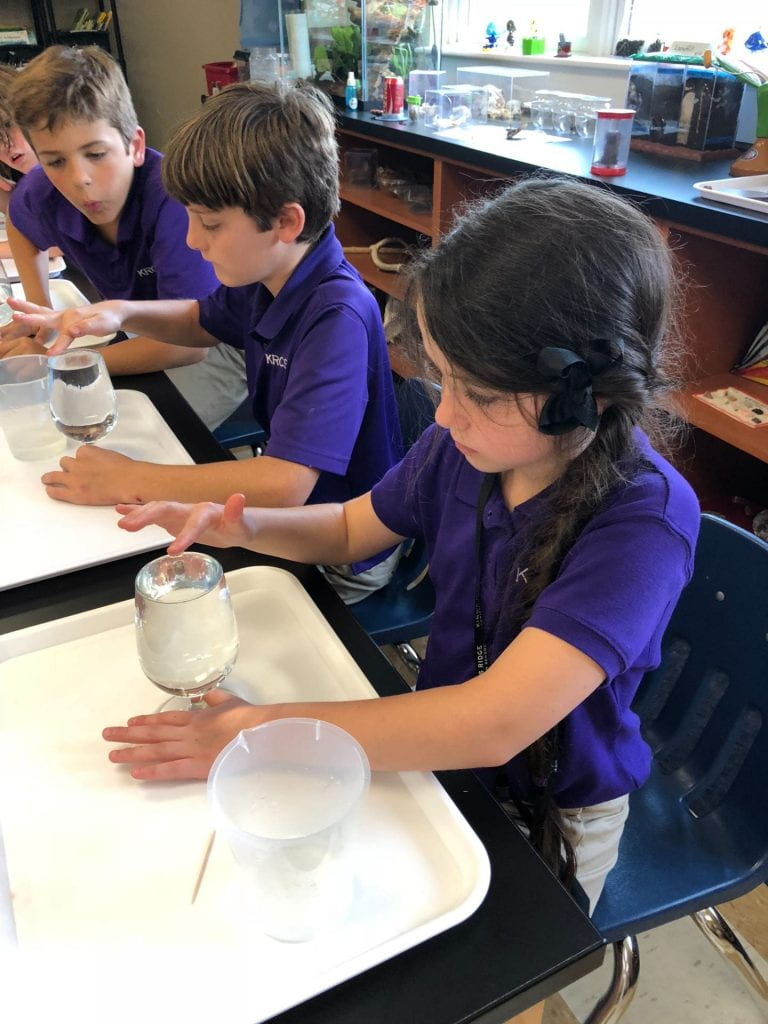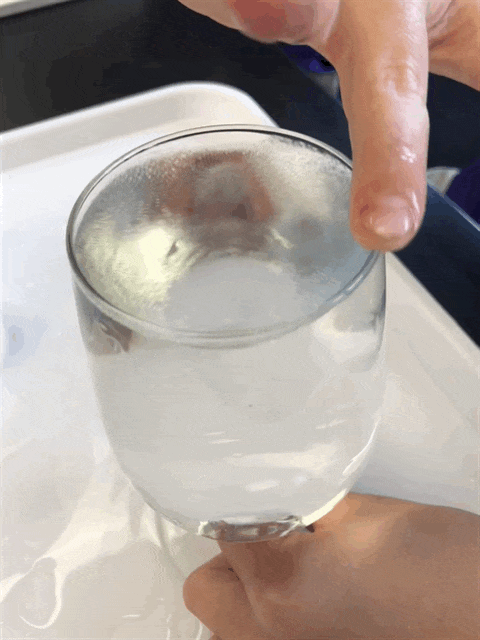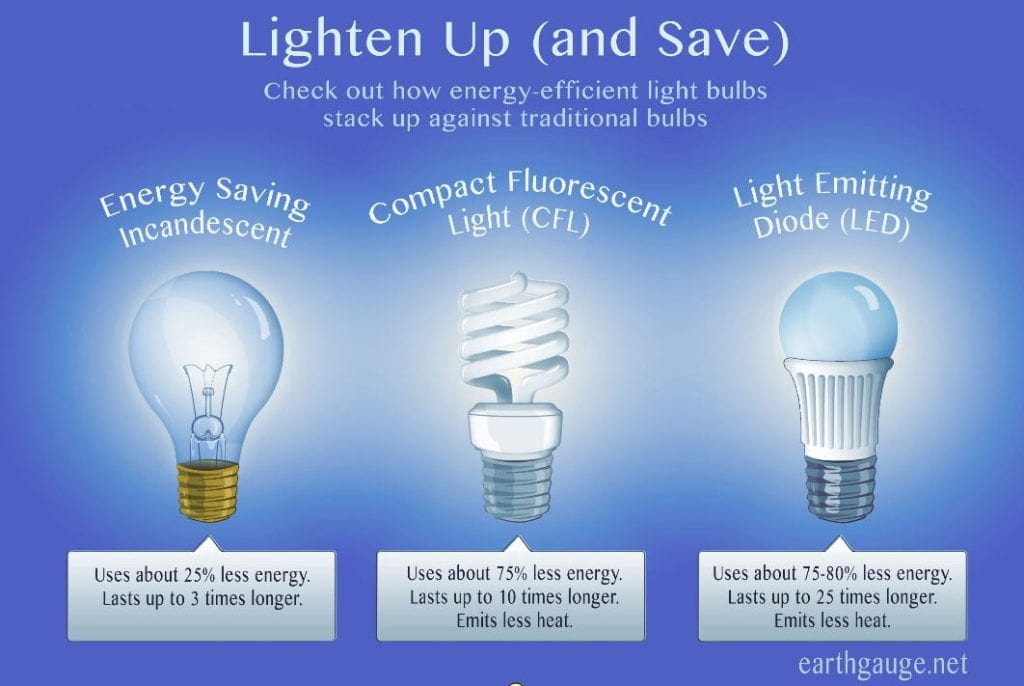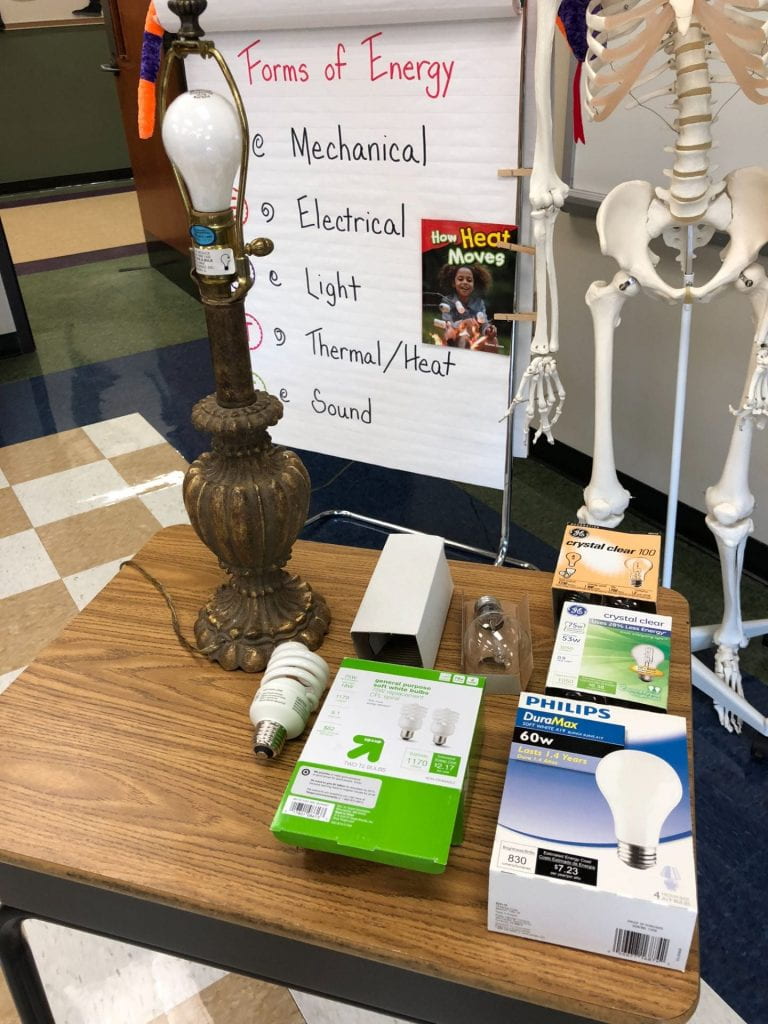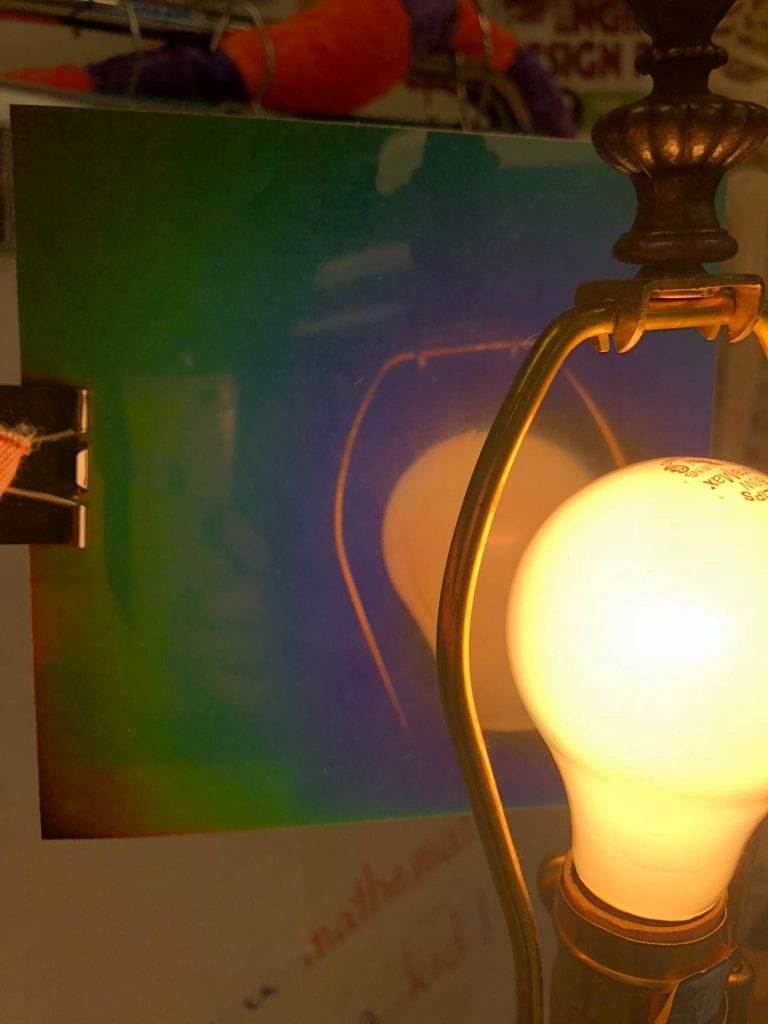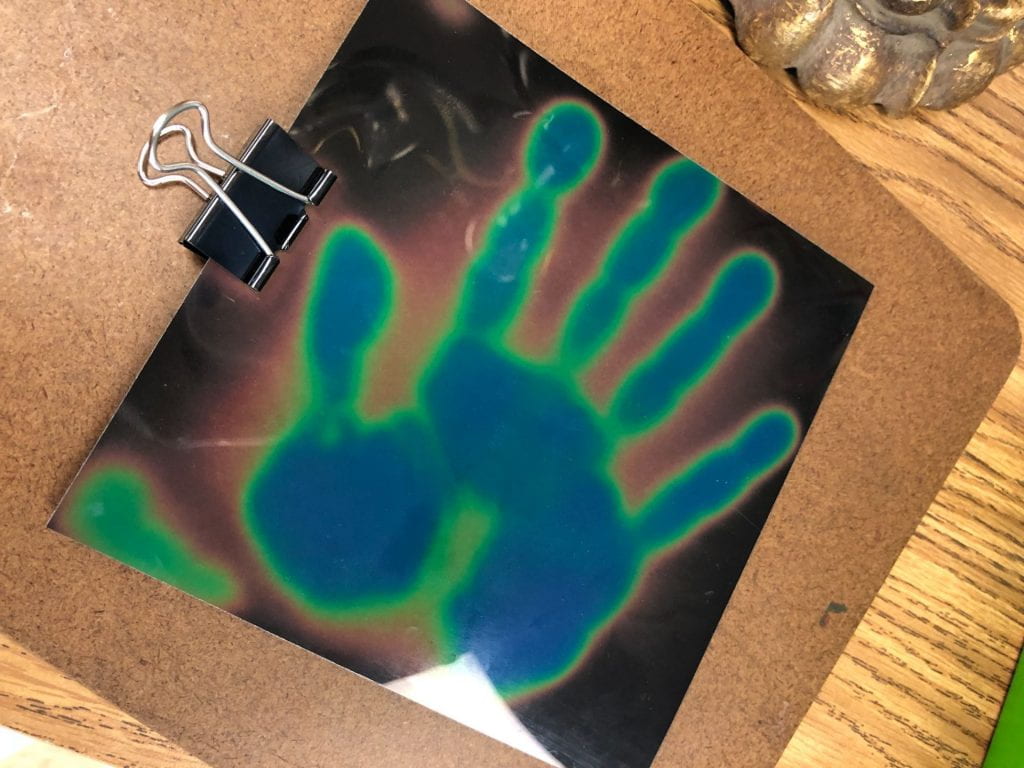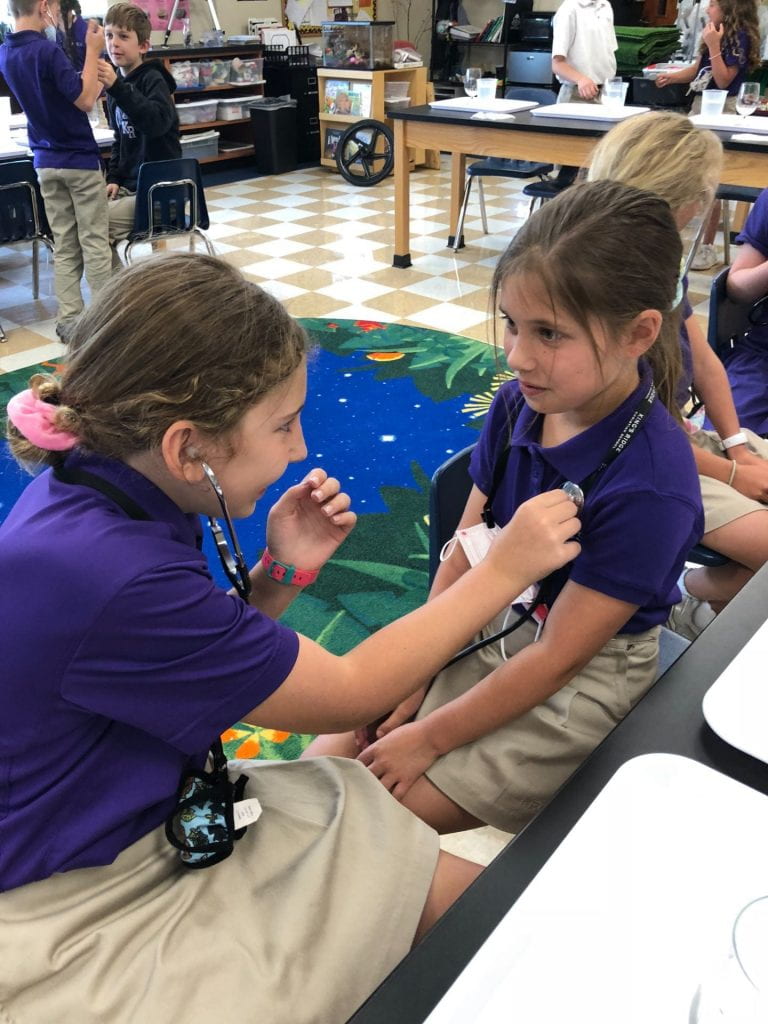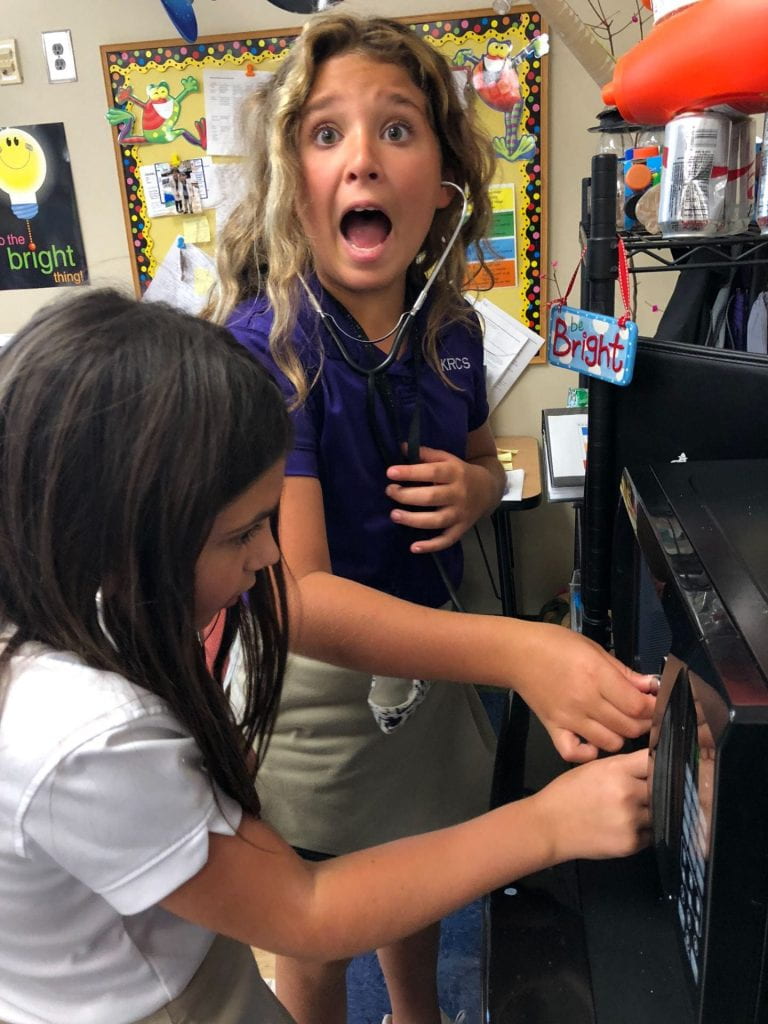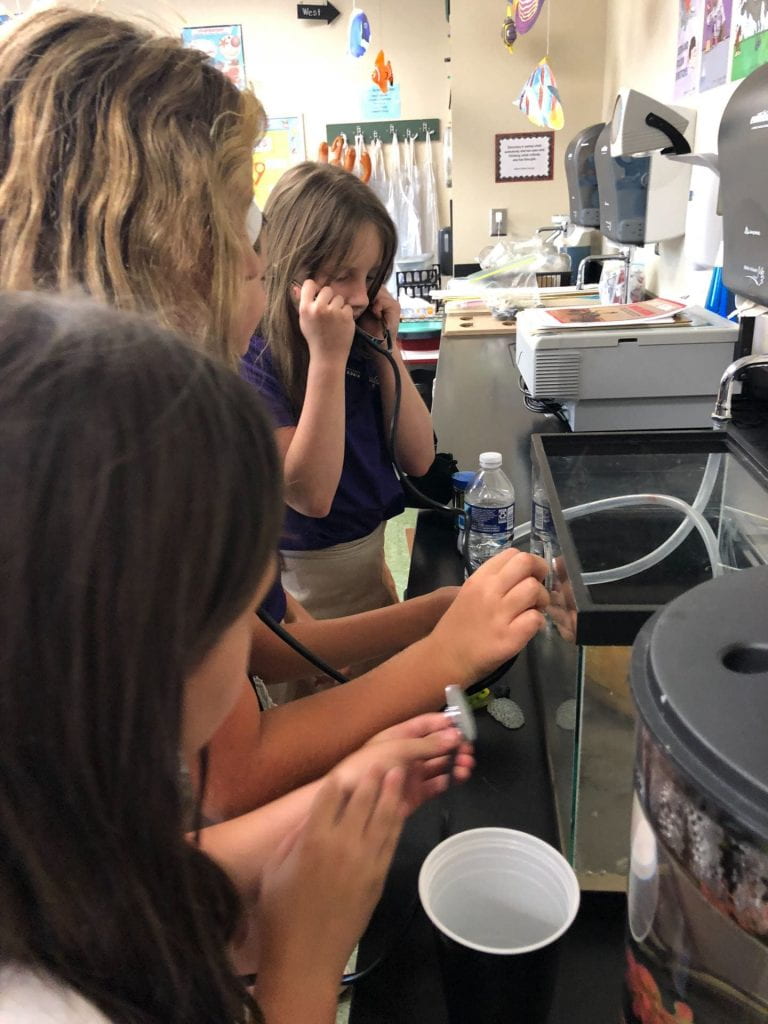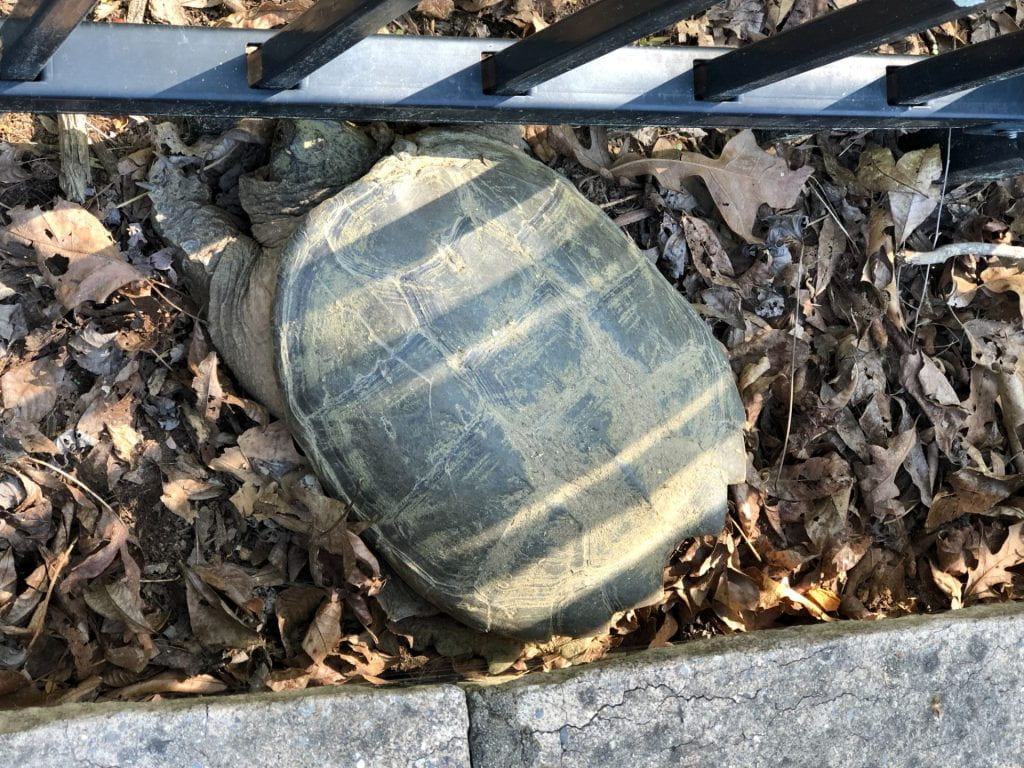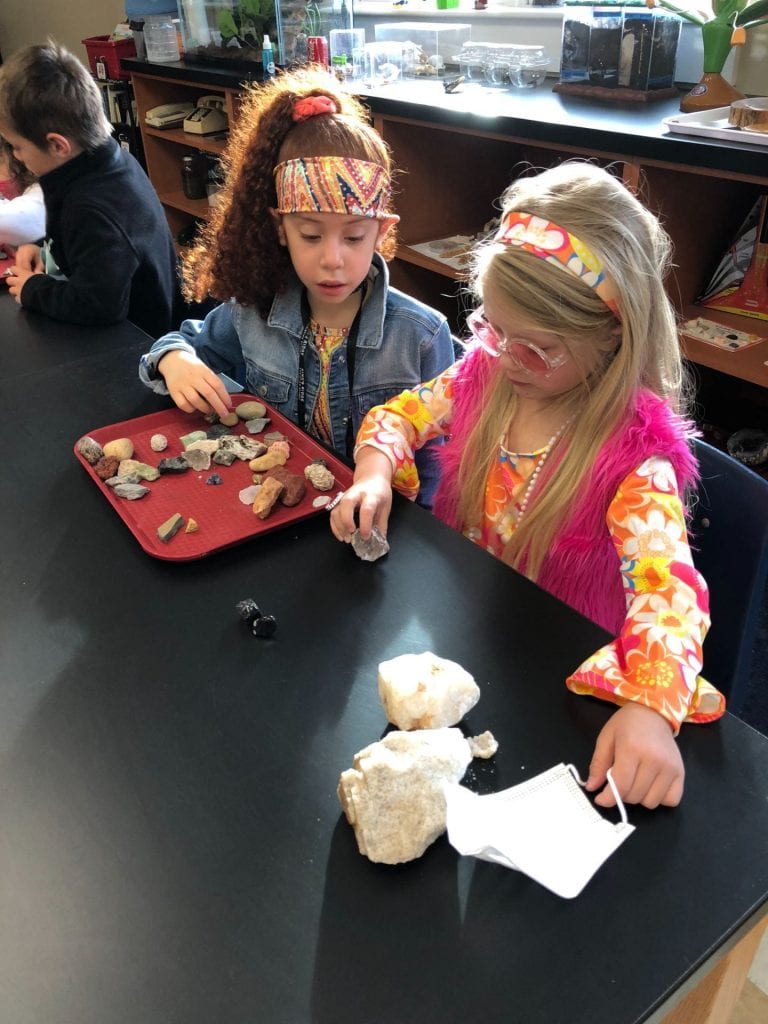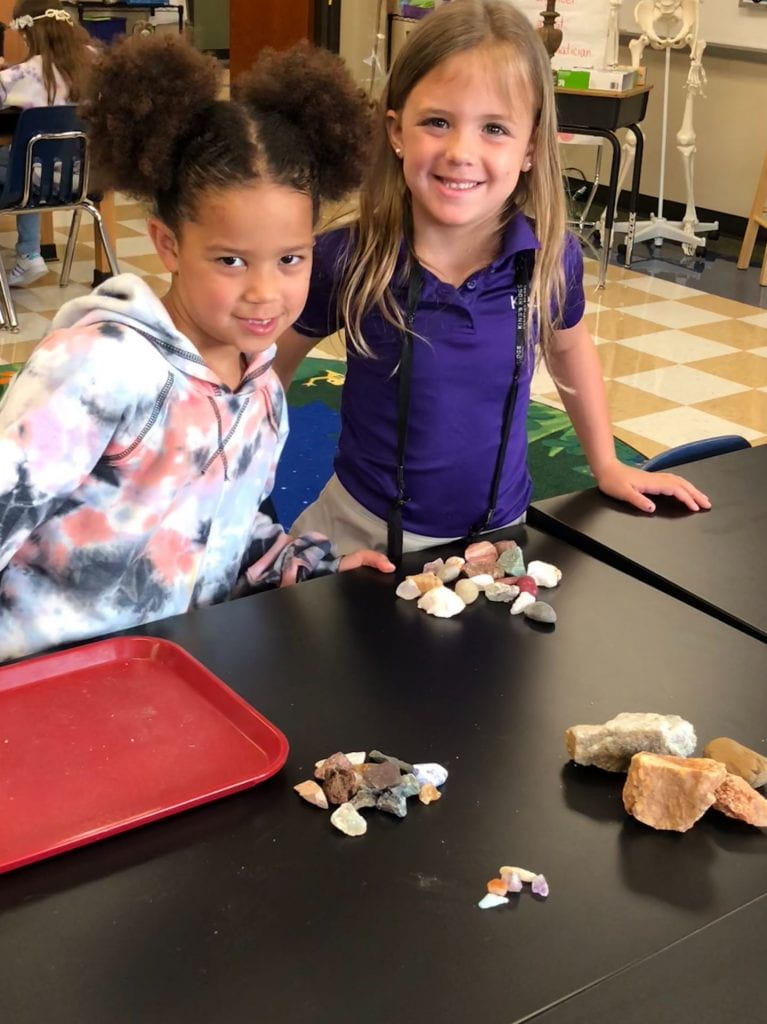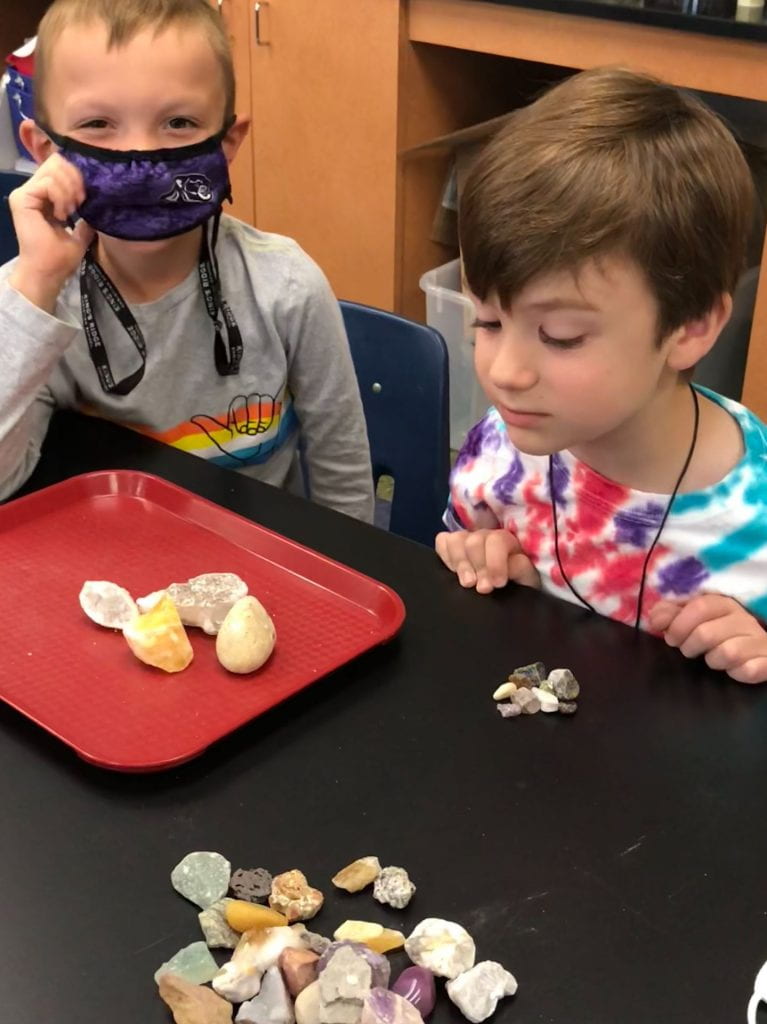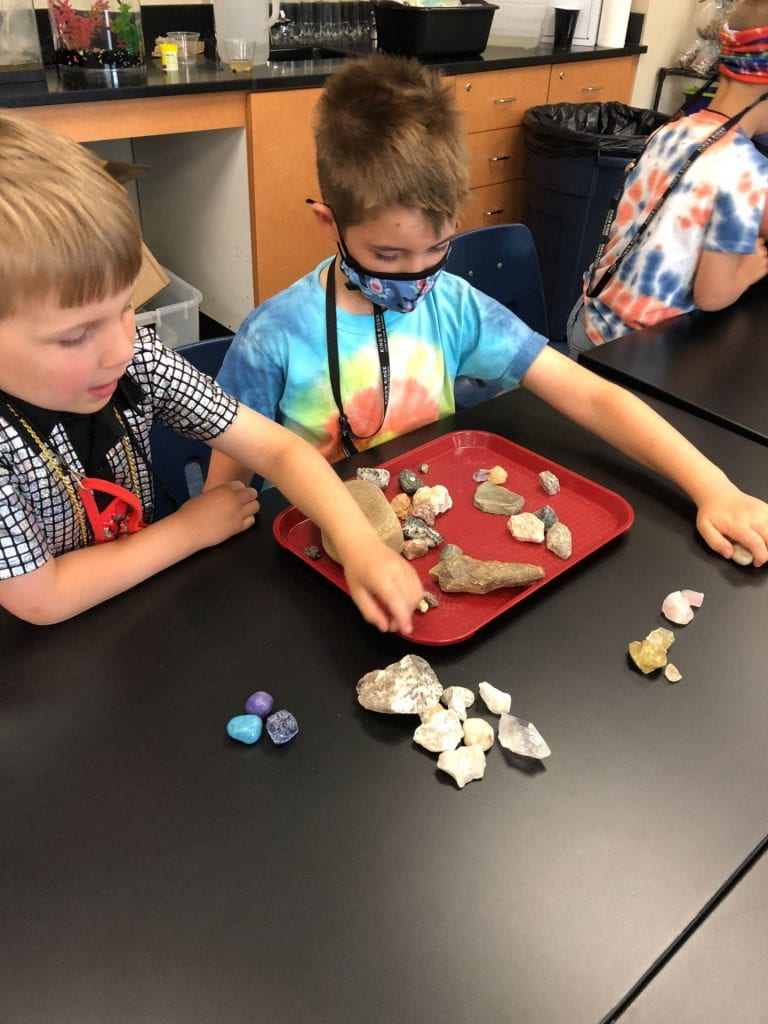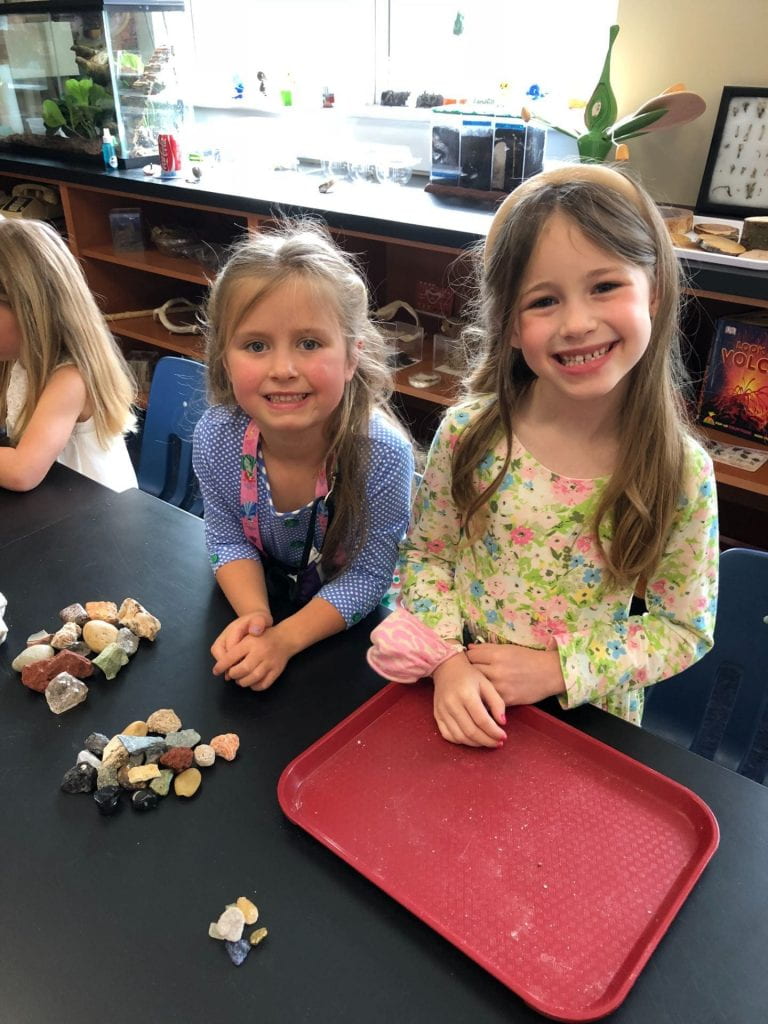Sound and Light
Fourth grade physicists continued their study of sound and light. As we rubbed our fingers over the rim of the glasses, vibrations were produced inside the glass which in turn created a sound. Click here to watch a street musician. As we poured water in and out of the goblets, the pitch changed. Click here to watch the toothpick challenge.
Energy efficient bulbs emit less heat than traditional incandescent bulbs and are safer to operate and cut energy costs associated with home cooling. They also last longer and save in electricity costs over their lifetime.
We proved the efficiency of the bulbs by placing heat sensitive sheets behind them. The bulb that used more of its energy for light, didn’t release much heat onto the sheet. Look at all the colors that were displayed on the heat sensitive sheet from the less efficient bulb. Which colors represent the most heat?
After a brief lesson about the heart, we used stethoscopes to listen to a variety of sounds around us, such as our hearts, stomach, the motor on the fish tank, the lab fridge, and finger tapping. Click here to watch an informative video about the heart.


